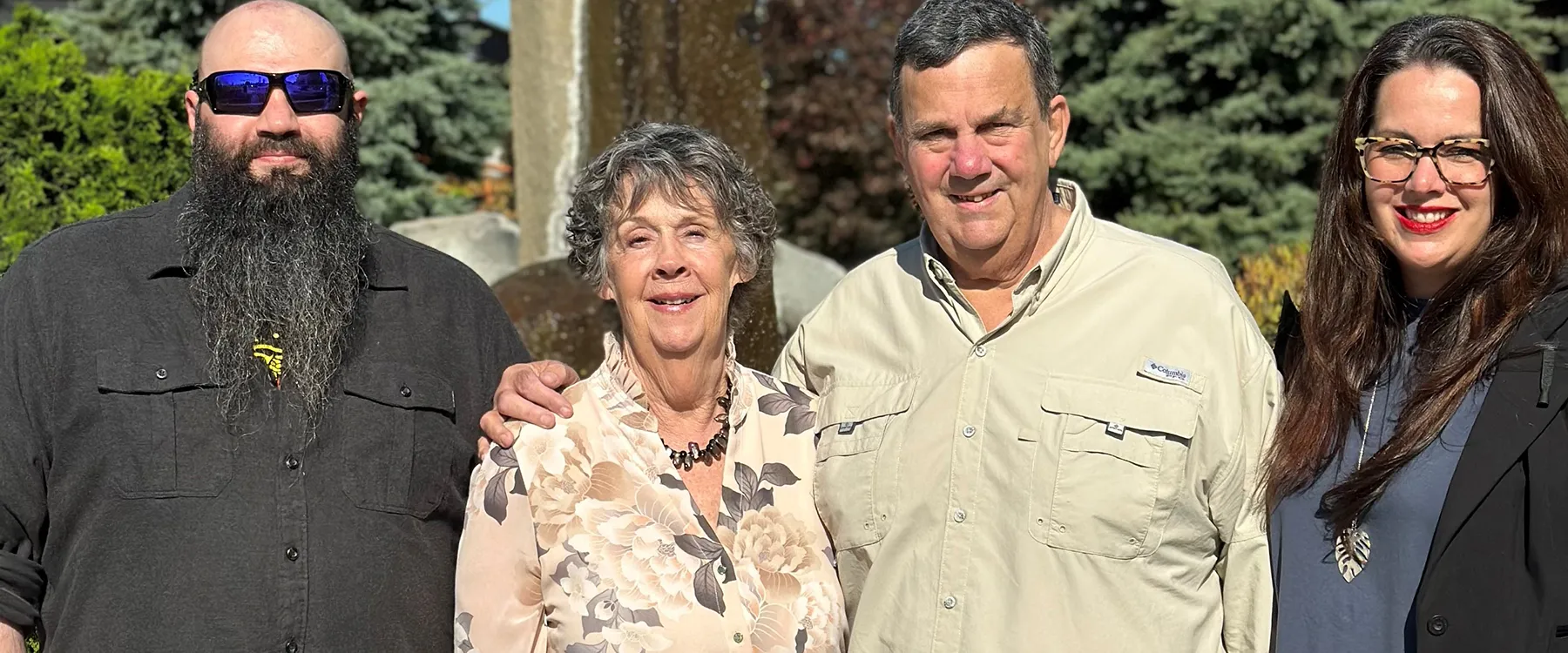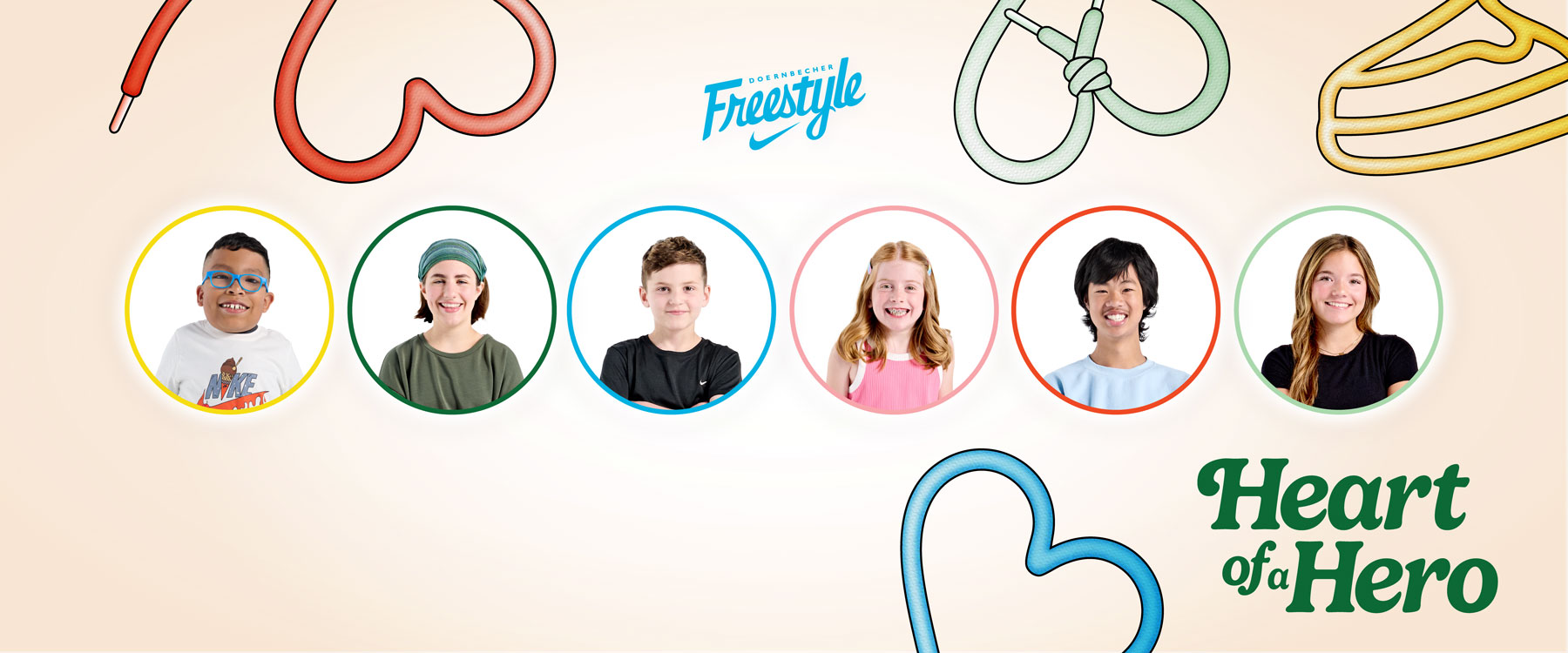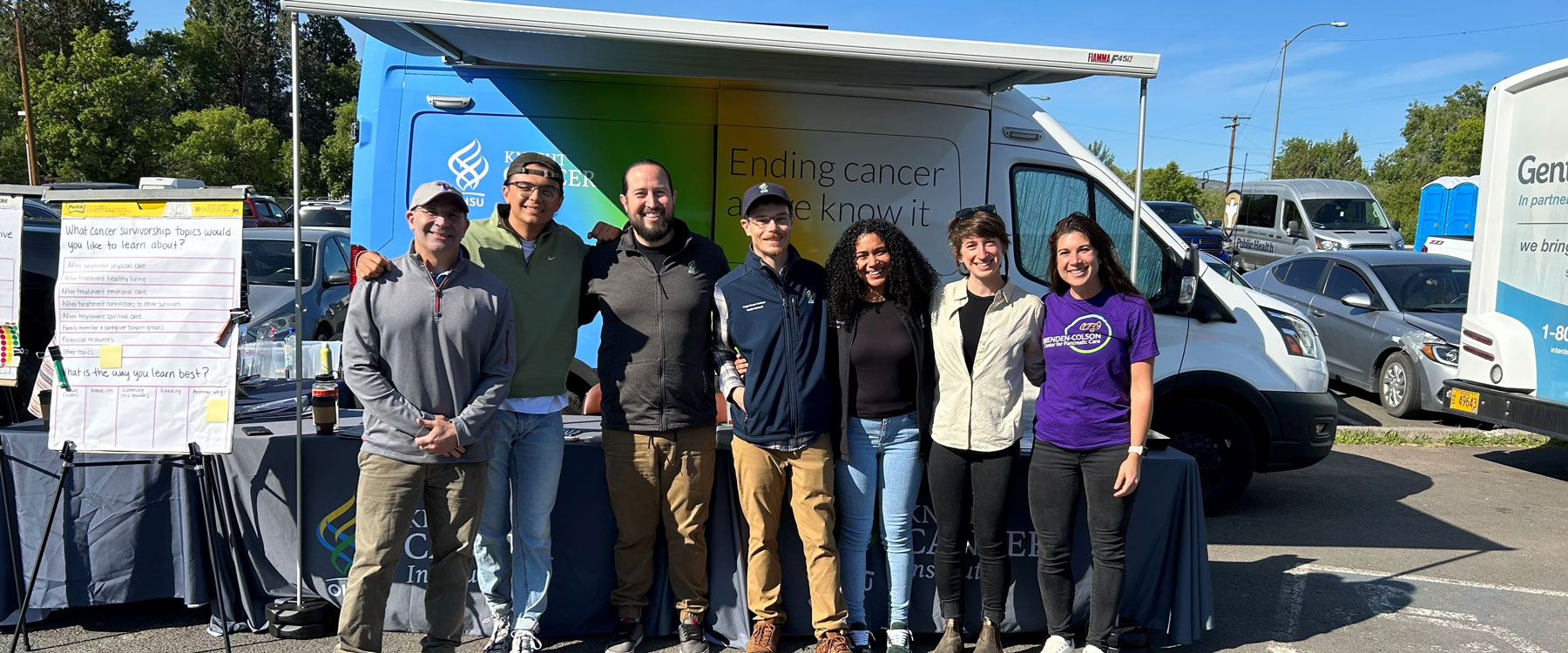David Brockman has come a long way.
In June of 2022, Brockman was diagnosed with a rare type of lymphoma: triple-hit diverse B-cell lymphoma. Initial chemotherapy treatment proved ineffective, and his pain was getting worse.
Brockman was referred to the OHSU Knight Cancer Institute, where he immediately began an immunotherapy treatment called CAR T-cell treatment. Today, he is optimistic, and scans show no signs of cancer. His experience at OHSU inspired a gift to the Knight Cancer Institute during the OHSU Foundation’s Give Day in May 2023.
Transcript
“They gave me the T cells. I don’t remember anything for the next 35 to 40 days. You know, there’s side effect with neurotoxicity. Those 35 days, I don’t remember anything. I guess I was talking. I didn’t know my wife sometimes. But by about day 30, I was waking up and I really felt good. I was starting to get my wits back about me. Just before discharge a nurse came in and she said, ‘Do you remember me?’ And I said, ‘Well, you look familiar.’ She says, ‘Well I took care of you for the first week or two when you first got the treatment.’ She says, ‘One morning I came in and said, “What do you want for breakfast?”’ And I told her I wanted an automobile. *laughs*. It was no kidding. And she says ‘No, breakfast.’ And I said, ‘I want an automobile.’ I says, ‘You know, you cut a banana on it or you put brown sugar on it.’ I was trying to say ‘oatmeal.’ *laughs*. We got a good laugh out of that.”
David Brockman’s body was riddled with tumors. He was diagnosed with a rare form of lymphoma in the summer of 2021. After a few rounds of chemotherapy at Providence, he was making little progress and was in a terrible amount of pain. He was referred to the OHSU Knight Cancer Institute, where he immediately began CAR-T cell treatment. Today, he’s optimistic. Scans show no signs of cancer. His experience at OHSU inspired him to make a gift during the OHSU Foundation’s Give Day last May. This is his story.
“Late May, early June last year, I really didn’t feel well, and by the end of mid to late June, I ended up going to the hospital, and I went to Providence hospital here in Milwaukee. I was in terrible pain — weakness and all kinds of stuff in my legs and arms and stuff. I was really struggling. And so the doctor ordered a pretty extensive MRI with contrast, without contrast, and turns out my spine was just loaded with tumors. My skull had tumors in it, you know, lesions. By then we knew it was triple-hit diverse large B-cell lymphoma. The next day, I started chemotherapy with Providence. I was getting ready for my third methotrexate, and I was so sick that they said they couldn’t give me the third dose. And they did some testing and said, ‘It’s quit working.’ And so talking to Providence, they weren’t very optimistic. They said, ‘We can give you more chemo. It isn’t going to kill it.’ And I said, ‘Well, what about CAR-T cell treatment.’ You know, we were aware of that. They said they could do it, but they weren’t just really up on it. And we knew OHSU was. And so I talked to my primary care physician at OHSU. I told him where we were, that it quit working, and asking for a referral. And Providence supported that. And I mean, within a day or two, I had an appointment to go see Dr. (Levanto) Schachter. We walked into the room, and the first thing he said to me, he says, ‘What are your goals?’ And I says, ‘Well, 15 to 20 years more of good life *laughs*. He chuckled and said, ‘Well, how about we start with two?’ *laughs*. ‘Sounds good to me,’ but he was ready to go. He had reviewed my whole case. He was ready. He says, ‘Here’s what it is. This is how we’ve got to go through it, the whole process of taking the T cells out, sending them off to a lab to be engineered, bring them back and insert them in me, to put them in. So I said, ‘OK.’ I was ready to go.”
“When you get ready for CAR-T treatment, before they give it to you, you have to write a sentence. And the sentence I picked, I wrote, ‘The reactor is critical.’ And then every four hours after they administer this stuff to you, they ask you to write that sentence. And the firs couple times, I did OK. And then after that for the next 20 days, it was nothing but a stinkin’ scribble. And then you can watch over time, as it got better and better and better, I could re-write the sentence right. By 35-40 days, I was coming out. I was pretty clear. I was doing OK. And I could really tell the difference. I felt good. I was waking up in the morning going, ‘God I want to get up and go.’”
“They did another PET scan to see to see, ‘OK how’d we do?’ Every bit of the cancer that I had when they started the treatment was gone. But I had a little bit of cancer that was new in an area where I didn’t have any before. They said, ‘Well there’s some clinical trials we can put you in, but you’re not healthy enough to go into those. We’ve got to get your strength back. We’ve got to do all that. We’ll put him on what’s called Revlimid, which is immunotherapy.’ So they started me on that. The hospital stepped up actually sending physical therapists up two maybe three times a week for half an hour. And they’d come and give me a bunch of stuff to do. About day 64, I had a second PET scan, and everything was gone. No cancer. No visible cancer. The doctors were dumbfounded. I was happy as hell. I mean, they said I *laughs*, they were ecstatic. They just said, ‘Well, the Revlimid must be working’ *laughs*.”
“So that’s where I am. I don’t have any visible cancer. They don’t say I’m in remission. They don’t say I’m cancer free. They just really don’t have protocols for somebody in my shape. They just said, ‘It isn’t very common. There’s just so few of you.’ So we’re just monitoring. Once a month I have a blood test. Once every three months I’m going to have either a CT scan or a PET scan and see the oncologist and just go through monitoring like that. I feel great. I’ve got my strength all back. I mean, I’m good.”
“So they had this donation day, I guess OHSU does. I said, ‘That’s something I’d donate to.’ Because I was just dumbfounded by the number of people that have cancer, and I was really exposed to blood cancer, right? So there’s two full floors in the Kohler Pavilion dedicated to blood cancer. I just couldn’t believe the number of people that were struggling, cancer, one thing or another. So that really struck me, and it also struck me the quality of care from the oncology department. The quality of care. The nurses, the CNAs, everybody — the quality was just excellent. It’s a well-run organization, and there sure as heck is a need. And so I just donated to the Knight Cancer Clinic and I said, ‘Wherever the need is most.’ I didn’t try to direct it other than to the cancer clinic. And I’ll do it again. *laughs*”
“We talk about it. My wife, son and daughter, we all talk about the quality of care I received — both from the technologies, the experts that administered it, and the people that treated me. Everything. It wasn’t just some of them. It’s all of them. It’s a well-run outfit. It was first class — just top notch. I’m a believer, I’ll tell ya. *laughs*”




